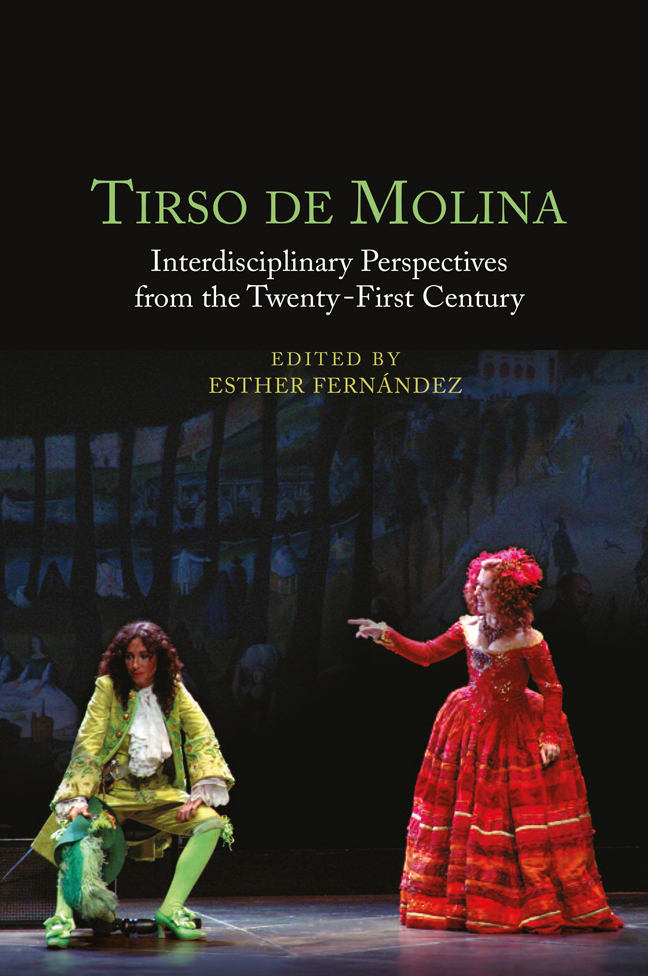2 - A Text with No Name? The Rise and Fall of Tirso’s Attribution of El burlador de Sevilla
Published online by Cambridge University Press: 02 March 2024
Summary
Don Juan Who am I? A man with no name.
(The Trickster of Seville, I.1)Juliet Capulet What’s in a name?
(Romeo and Juliet, II.2)Fray Gabriel Téllez, better known by his penname Tirso de Molina, is famous for inventive comedies such as Don Gil de las calzas verdes [Don Gil of the Green Breeches] or Marta la piadosa [Martha the Divine]. He has also been at the center of several authorial disputes, such as the attribution issues regarding El condenado por desconfiado [Damned for Despair] and, most especially, El burlador de Sevilla [The Trickster of Seville and the Stone Guest]. This essay focuses on the problems surrounding the attribution of the latter as a case study of the intersection of authorial instability and editorial dynamics that characterize early modern Spanish theater, which fully affected Tirso as a playwright. In the second part of this chapter, I examine the evolution of Tirso’s link with El burlador and how it showcases challenges and possibilities for scholars who study plays of dubious authorship associated with him.
The relevance of El burlador lies in its role as the origin of the literary figure of Don Juan: the womanizer and seducer who deceives women, friends, and family alike to achieve his sexual objectives, and who shows no remorse for his actions even if they have terrible consequences, such as rape or murder. Written circa 1616, this play has gone on to inspire hundreds of artistic creations that have explored the possibilities of the Don Juan archetype, such as Molière’s Dom Juan ou le festin de pierre [Don Juan or The Feast of the Stone], Mozart and Da Ponte’s Don Giovanni, and Byron’s incomplete poem Don Juan, to name just three iconic reinterpretations. Hamlet never dreamt of such a varied and glorious progeny.
Despite El burlador’s success, its author’s name is not unequivocally linked to the text. Michel Foucault’s (1992) influential essay “What is an author?” served to de-essentialize the concept of authorship and stress the need to historize how it functions within a specific society—in relation to issues such as anonymity, collaborative writing, state control, textual ownership, or institutionalization processes. In this sense, early modern theatrical authorship was more complex and dispersed than established contemporary modes of printed authorship owing to the economic and legal dynamics of the time.
- Type
- Chapter
- Information
- Tirso de MolinaInterdisciplinary Perspectives from the Twenty-First Century, pp. 23 - 40Publisher: Boydell & BrewerPrint publication year: 2023

